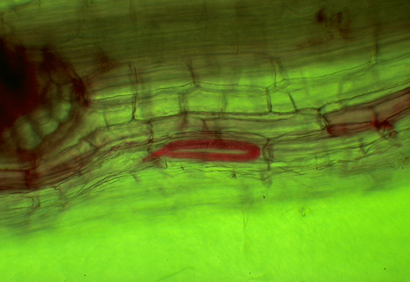Nematodes threaten grain yield

April 13, 2011
DeKALB | Most of the land in DeKalb is farmland, and therefore much of the city’s revenue comes from crops and property taxes. There is, however, a predator aimed at disrupting this, and worse yet, is invisible to the naked eye.
The corn nematode is a microscopic worm that can stunt corn plants, make them grow uneven, yellow the plants’ leaves and shrink the plants’ size. Swollen roots are also an indication nematodes are feeding beneath the soil, according to the Integrated Crop Management at Iowa State.
One of the reasons farmers do not suspect corn nematodes as the culprit for crop destruction is because the damages brought about may not be solely caused by corn nematodes, according to the Integrated Crop Management.
Illinois has 76,000 farms covering 28 million acres, which is nearly 80 percent of the state’s total land area, according to the Illinois Department of Agriculture.
Terry Niblack, professor of soybean cyst nematode management at the University of Illinois at Champaign-Urbana, said corn nematodes have always been in the soil; ever since the glaciers receded. She said the most common species found on corn in Illinois is the spiral nematode.
“On the outside of the root is a layer called the epidermal layer,” Niblack said. “These nematodes feed on that layer so they feed on the cells on the surface of the root and kill those cells.”
Niblack said since the nematodes are making holes in the root, fungi and bacteria would be able to infect the roots.
Tamra Jackson, corn and sorghum specialist at the University of Nebraska-Lincoln, said the type of symptoms corn experiences largely depend on the type of nematode present.
“Some nematodes feed inside the root and continue to move around and feeding, causing stunting,” Jackson said. “Most nematologists agree that root lesion nematodes probably cause the most accumulative damage across all states.”
Jackson said about 80 percent of the fields in the Midwest had legion nematodes last year. But their presence alone does not mean there is a problem.
Jackson said the only way to see if nematodes are present and dangerous is to analyze a soil sample in the lab.
“You have to be sure to check for nematodes in the soil and in the root,” Jackson said. “The nematodes have to feed on the root, but some of them go inside the root, which are called endoparasites. Others feed from the outside of the root, so if labs are only looking at nematodes in the soil, they may be missing what’s happening inside the root.”
One of the reasons why corn nematodes are much more common today is because the pesticides used on genetically-engineered crops do not kill the species.
Thomas Sims, associate professor of plant molecular biology at NIU, said the pesticides used now contain a protein called Cry.
“This protein is highly toxic to a class of insects, moths and butterflies,” Sims said. “The protein bind to the protein receptors in the gut of the insect and those proteins are only present in that class of insects. It doesn’t harm humans, animals or the corn nematode.”
Sims said 50 to 60 percent of corn in DeKalb is genetically engineered.
“The end result is a reduction in total grain yield,” Niblack said. “Therefore farmers’ profits go down.”






